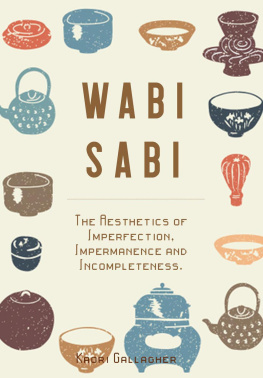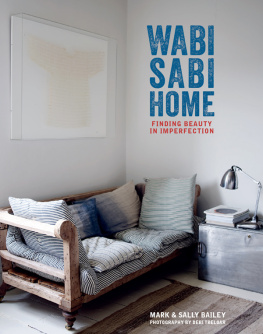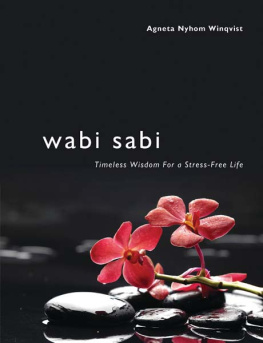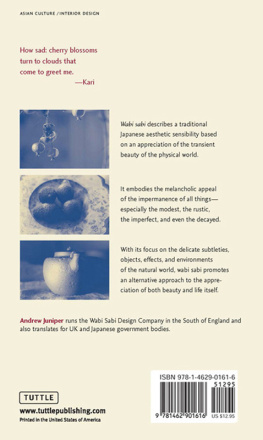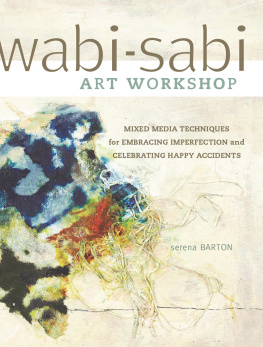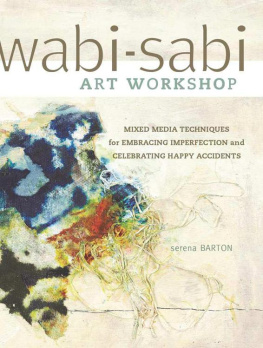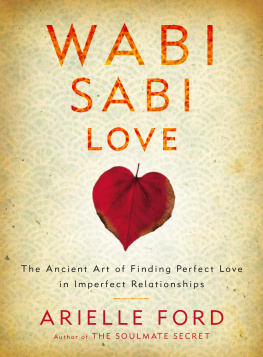Kaori Gallagher - Wabi Sabi: The Aesthetics of Imperfection, Impermanence and Incompleteness
Here you can read online Kaori Gallagher - Wabi Sabi: The Aesthetics of Imperfection, Impermanence and Incompleteness full text of the book (entire story) in english for free. Download pdf and epub, get meaning, cover and reviews about this ebook. year: 2020, publisher: Kaori Gallagher, genre: Romance novel. Description of the work, (preface) as well as reviews are available. Best literature library LitArk.com created for fans of good reading and offers a wide selection of genres:
Romance novel
Science fiction
Adventure
Detective
Science
History
Home and family
Prose
Art
Politics
Computer
Non-fiction
Religion
Business
Children
Humor
Choose a favorite category and find really read worthwhile books. Enjoy immersion in the world of imagination, feel the emotions of the characters or learn something new for yourself, make an fascinating discovery.
- Book:Wabi Sabi: The Aesthetics of Imperfection, Impermanence and Incompleteness
- Author:
- Publisher:Kaori Gallagher
- Genre:
- Year:2020
- Rating:5 / 5
- Favourites:Add to favourites
- Your mark:
Wabi Sabi: The Aesthetics of Imperfection, Impermanence and Incompleteness: summary, description and annotation
We offer to read an annotation, description, summary or preface (depends on what the author of the book "Wabi Sabi: The Aesthetics of Imperfection, Impermanence and Incompleteness" wrote himself). If you haven't found the necessary information about the book — write in the comments, we will try to find it.
You Are About To Learn How To Get In Touch With Wabi-Sabi, The Japanese Secret Philosophy, To Change Your Outlook Towards Life, For Good!
A cracked pot is smeared with gold dusted lacquer to show the beauty of its age and damage instead of hiding it...
The cracks in an old teacup are seen as assets, not flaws...
These are just two examples representing the reflective Japanese concept of Wabi-Sabi, which is the art of finding beauty in the imperfect, impermanent and incomplete.
You know very well how the western world is obsessed with perfection- no wonder were generally never contented, never settled, and by and large, never happy.
Wabi-sabi gives us a different kind of view, a totally different form of mindset from our material-based lifestyles. It shows us how to appreciate all that is simple, modest and imperfect. It also demonstrates to us the true meaning of authenticity.
There are many ways of viewing and understanding this concept, just as there are to adopting it, and chances are, youve been desiring to learn more about Wabi Sabi, and even apply it in your life. If thats the case, youre in good hands.
This book is here to take you through on a journey of discovery to have a deeper insight into this treasured concept right from the basics to its application in different contexts such as love, programming, photography, ceramics, art and poetry.
So if questions like...
How do you develop the mindset to see beauty in imperfection?
How can you adopt Wabi-Sabi in different parts of your life?
What sort of benefits can you expect from Wabi Sabi?
And many others are going through your mind, this is your book so keep reading!
More precisely, heres what youll learn:
...And so much more!
Even if youve never heard about Wabi-Sabi before, this books beginner friendly approach will enable you to understand it inside out and be able to apply it in your everyday life.
So whether youre here to learn about Wabi-Sabi and take delight in the knowledge, or you want to change your attitude towards life and find happiness, this book is here for you.
Scroll up and click Buy Now with 1-Click or Buy Now to get started!
Kaori Gallagher: author's other books
Who wrote Wabi Sabi: The Aesthetics of Imperfection, Impermanence and Incompleteness? Find out the surname, the name of the author of the book and a list of all author's works by series.

